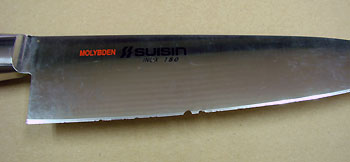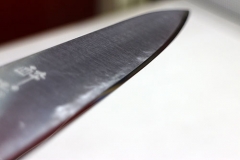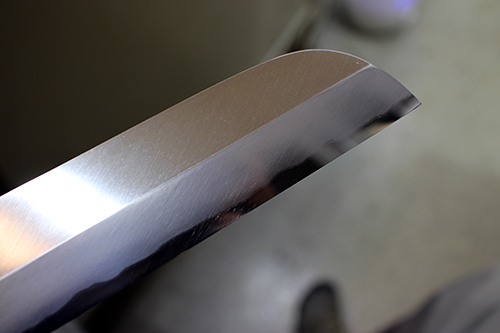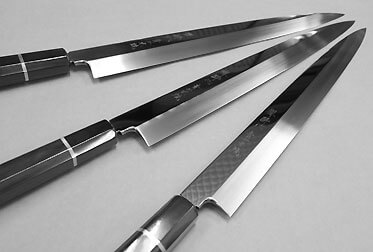Honbazuke by craftsmen
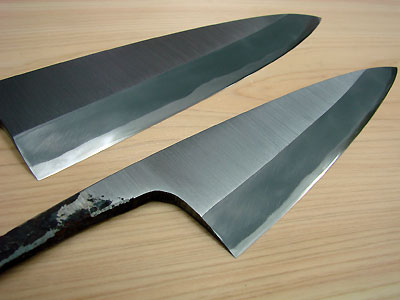
I’ve just taken on a repair job for the Urasuki on a Deba knife. Urasuki refers to creating a concave shape on the backside of a Japanese kitchen knife. Have you ever seen those large vertical rotating water stones in a craftsman’s workshop? That’s what we use to grind the backside, but it’s easy to think you just need to grind the back quickly. However, doing so could result in removing a lot of precious steel (like white or blue steel), leaving it dangerously thin later on. So, what’s the solution? The proper method involves using a tool called Tagane on the front side of the knife to create the concave shape across the entire blade before grinding the back again. This process requires removing the handle and erasing any marks left by the Tagane on the front side, ultimately requiring the same skill and labor as sharpening a brand-new knife. From the craftsman’s perspective, sharpening a new knife might seem easier… Chefs who request Urasuki repairs often understand their knives’ characteristics and request the service out of attachment or simply because they want to extend the knife’s lifespan. While Urasuki work is challenging, it must be done properly! Today, the Deba knife returned from the craftsman, who said, ‘I’ve sharpened it for immediate use.’ So, let me share the edge the craftsman has given.

The edge on this Deba knife is sharpened thinner than usual, giving it a bit of a menacing feel depending on the task (been there, done that…). But the way the edge stretches out and the finish on the blade are quite impressive! Could it be that leaving the sharpening marks from the medium stone was inspired by the Kasumisshimo technique? With the hand-sharpening marks clearly visible, there’s likely no irregularity from machine sharpening. Perhaps the craftsman is reading this blog…? It feels like they’re saying, ‘This is how far you can go!’ Amazed by how they achieved the finish on the edge, though the angle of the finishing stone on the cutting edge was just a few millimeters off. It shouldn’t pose any problems in use, but I want to finish it off with style!! As I’ve mentioned before, I’d cover the entire steel part. All in all, I’ve seen some impressive sharpening. It made me think, ‘I’d like to try this edge on a Yanagiba knife!
Hibishugyo
- 2009-01-13

